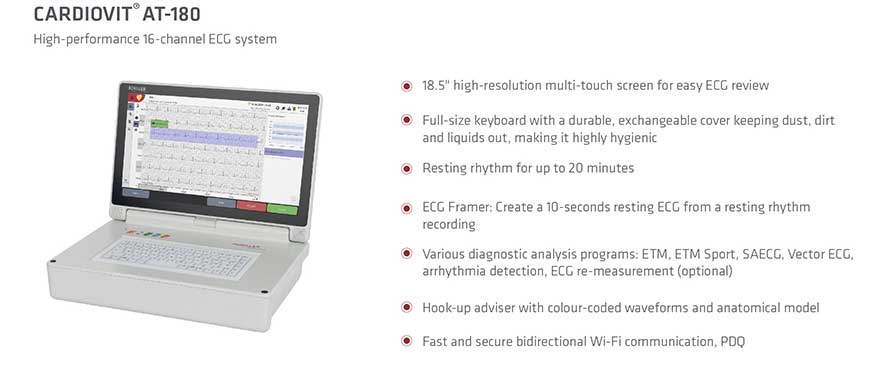Industry Speaks
The importance of resting ECG in sports check-up

The combination of heart and sport has been a topic for over a century. The benefits and risks that are involved in relation to sports have been debated and ECG has been a constant focus of these discussions. We know with certainty that regular endurance sports activities lead to a physiological increase of the heart’s size, accompanied by a regular, eccentric increase in size of all heart chambers, and to a thickening, especially of the membranes of the heart chambers, accompanied by improved cardiac functions. As a result, ECG alterations can be observed, which are due to this physiological adaptation. However, these alterations can be misinterpreted as pathological changes.
As per the latest approximations, 1 per 40,000 to 1 per 80,000 athletes each year succumb to sudden cardiac death (SCD), making it the most common medical cause of death among athletes. Cardiac abnormalities accountable for SCD exist in 0.3 percent of the general population of athletes. The possibility of SCD increases when athletes are vulnerable to underlying cardiac abnormalities even though they are viewed as the healthiest people. The existence of cardiac abnormalities that can cause SCD are difficult to detect as not many indicators are present.
Abnormal findings on a 12-lead ECG indicate most disorders linked with an increased risk of SCD like cardiomyopathies and primary electrical diseases. It is important to discern an underlying pathological condition from physiological alterations, resulting from endurance sports activities, by a thorough analysis of ECG interpretation in athletes.
An international group of experts in sports cardiology, sports medicine, and inherited cardiac disease was convened in Seattle, Washington (USA), on February 26–27, 2015, in order to outline and modify existing standards for ECG interpretation in athletes. In addition to the revision of ECG interpretation standards based on evolving research, the experts intended on developing a well-defined guide to assess ECG abnormalities in athletes.
The result was released in a consensus statement – the Seattle Criteria 2017. Recommendations on the normal ECG of athletes and the linking of specific ECG abnormalities, and the secondary evaluation for conditions associated with SCD, were made in the course of many such consensus conferences.
Recent studies have revealed that a PC-based analysis of ECGs is better than only a visual interpretation as it greatly increases the validity of the interpretation of an athlete’s ECG. This leads to an improvement of the specificity, sensitivity, and predictive value of the ECG, thereby resulting in fewer false-negative and false-positive diagnoses. Hence, PC-analyzed resting ECGs are more dependable than clinical diagnosis and anamnesis for athletes. Due to this, a resting ECG should be a standard part of any sports medical check-up.
In co-operation with sports physicians, SCHILLER Healthcare has programmed the interpretation of athletes’ ECGs, based on the Seattle Criteria 2017. SCHILLER Healthcare’s ETM Sport allows the number of false-negative and false-positive results to be reduced, thus supporting the cardiologist in the recognition of abnormal findings. ETM Sport compares ECG measurements with the normal and abnormal values indicated by the Seattle criteria and classifies them.













